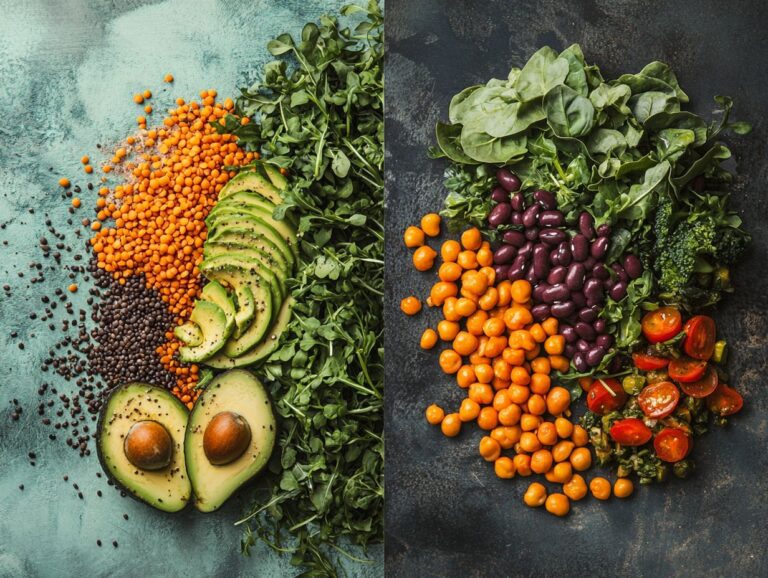This overview explores how a vegan elimination diet can enhance your health. It covers the purpose of this diet, the foods to eliminate, the recommended duration, and the benefits, which range from identifying food intolerances to improving digestive health. Additionally, it addresses potential risks associated with the diet, provides guidance on how to properly reintroduce foods, and offers tips for maintaining a healthy vegan lifestyle afterward.
What is a Vegan Elimination Diet?
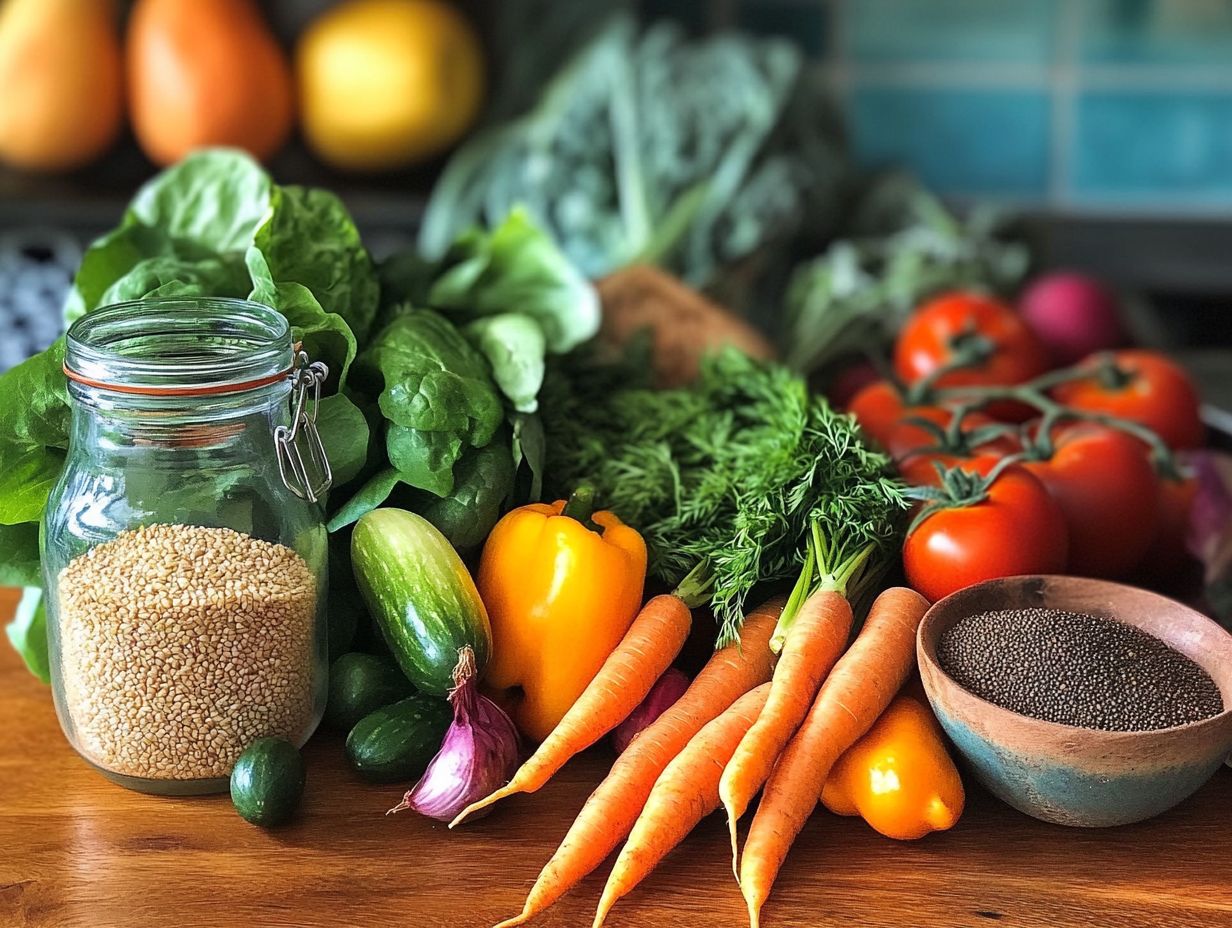
A vegan elimination diet is a specialized dietary plan aimed at identifying potential food intolerances, sensitivities, and allergies by systematically removing specific foods that may trigger gastrointestinal reactions or other health conditions.
This approach benefits individuals with known issues, such as irritable bowel syndrome (IBS), ADHD, and eczema, as well as those experiencing chronic migraines or unexplained bloating.
By making careful dietary adjustments, this diet promotes overall wellness and provides symptom relief.
What is the Purpose of a Vegan Elimination Diet?
The primary purpose of a vegan elimination diet is to diagnose food sensitivities and intolerances, enabling individuals to identify which foods may be causing reactions such as bloating, skin conditions like eczema, or migraines.
By systematically removing potential trigger foods, such as nightshade vegetables and nuts, from their diets, people can gain clearer insights into their optimal diet and the health issues they are experiencing. This method not only facilitates easier symptom tracking but also provides those with food allergies valuable knowledge for the future.
The elimination phase typically focuses on removing common allergens such as gluten, soy, and certain nuts, while still offering a wide variety of nourishing plant-based foods. The goal is to enhance awareness of how different ingredients impact health and to encourage the adoption of healthier lifestyles.
How to Start a Vegan Elimination Diet?
Starting a vegan elimination diet requires individuals to be aware of their dietary habits and to identify common trigger foods that may cause food intolerances or food sensitivities, like nuts and gluten.
To facilitate this process, it is beneficial to work with a registered dietitian or medical professional who can help create a comprehensive dietary plan. This plan will adhere to dietary guidelines and ensure nutritional adequacy while eliminating potential triggers such as gluten, dairy, nuts, and legumes.
What Foods Should Be Eliminated?
A vegan elimination diet should exclude foods known to exacerbate food intolerances and sensitivities, including common allergens like gluten, dairy, nightshade vegetables, nuts, and legumes. These foods can lead to gastrointestinal reactions and other health concerns.
By removing these items, individuals can more easily identify problematic ingredients that trigger symptoms such as bloating, gas, and fatigue. Dairy products contain high levels of lactose, a sugar that many people find difficult to digest, resulting in uncomfortable gastrointestinal disturbances and other health conditions.
Gluten, present in wheat, barley, and rye, can provoke reactions not only in those with celiac disease but also in individuals with non-celiac gluten sensitivity. Nightshade vegetables, including tomatoes, peppers, and eggplants, may trigger inflammation in some individuals, leading to joint pain and other inflammatory responses.
Although legumes are often a source of protein, they can cause bloating and discomfort due to their complex carbohydrates. Excluding these food categories can help individuals identify underlying food sensitivities and promote better overall health.
How Long Should the Elimination Phase Last?
The elimination phase of a vegan elimination diet typically lasts between two to six weeks. This duration allows individuals sufficient time to monitor their symptoms and evaluate how dietary modifications impact their overall health and well-being.
The actual length of this phase may vary depending on the severity of symptoms, the presence of other health issues, and the individual’s chosen approach to structuring their elimination diet. For some individuals, extending the duration may be necessary to fully track changes and establish a clear connection with specific food items.
During this crucial phase, carefully tracking symptoms is essential for identifying food intolerances. Keeping a food diary can help document bodily reactions, providing valuable insights when individuals begin reintroducing eliminated foods.
What Are the Benefits of a Vegan Elimination Diet?
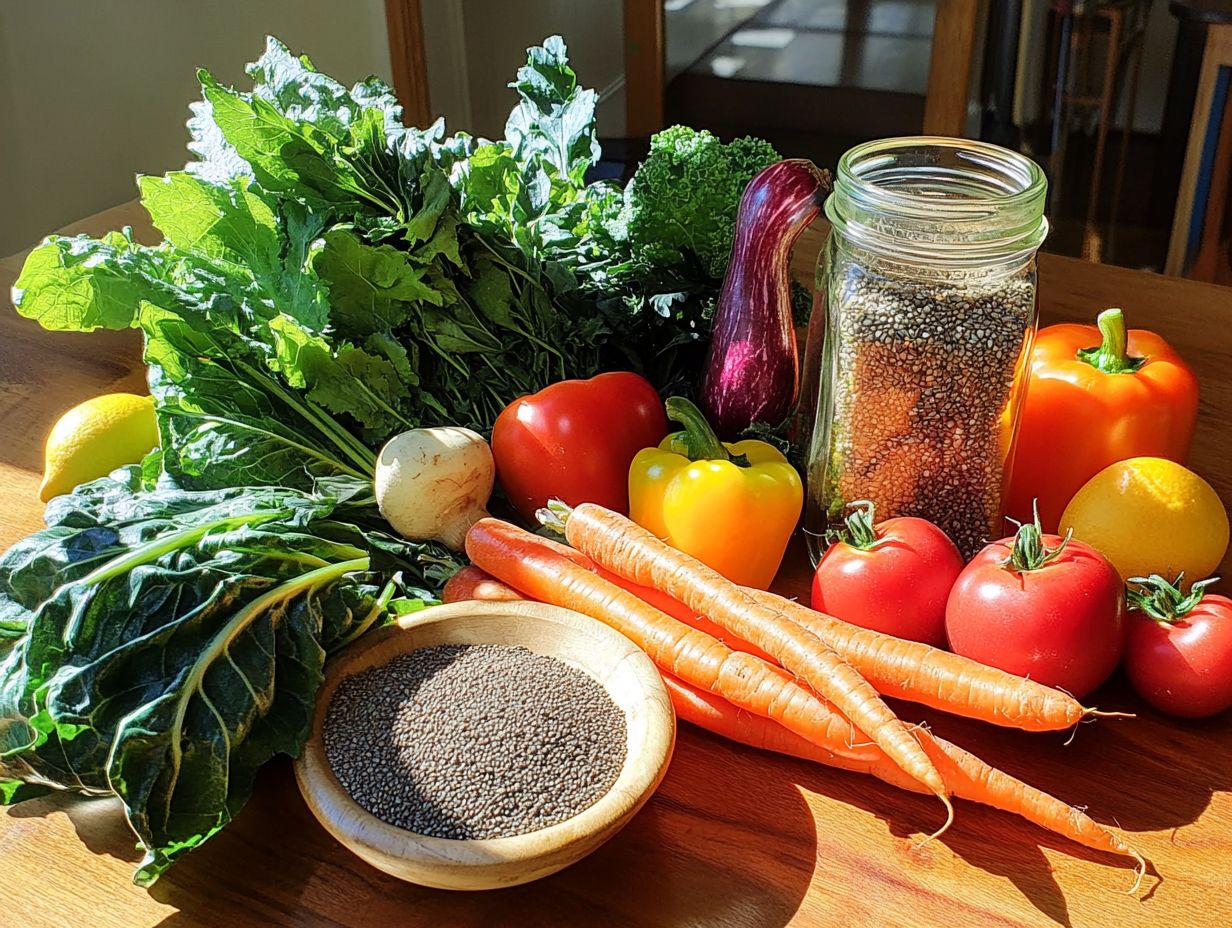
The vegan elimination diet offers numerous health benefits, especially for individuals with food intolerances and various health conditions, such as eosinophilic esophagitis and ADHD.
This diet can help improve digestive health, reduce inflammation, and provide a clearer understanding of one’s dietary triggers during the reintroduction phase.
Many people experience relief from symptoms associated with IBS, eczema, chronic migraines, and other food sensitivity-related issues, ultimately leading to an enhanced quality of life through better dietary choices.
1. Identifies Food Intolerances and Allergies
The most significant benefit of the vegan elimination diet is its ability to help individuals identify specific food intolerances and allergies through systematic elimination and careful symptom tracking.
By removing potential allergens and irritants, the diet allows the body to reset and provides a clearer understanding of how various foods affect overall well-being. During this period, it is crucial for participants to reintroduce foods gradually, one at a time, to monitor for any negative reactions.
Keeping a detailed record of symptoms during this process can be extremely beneficial. This practice not only aids in pinpointing exact triggers but also helps identify patterns in how the body responds to different foods over time, ultimately facilitating more personalized nutritional choices in the future.
2. Improves Digestive Health
The vegan elimination diet enhances digestive health by removing foods that commonly trigger gastrointestinal reactions. As a result, this leads to improved nutrient absorption and overall well-being.
The vegan approach creates a more favorable dietary environment for the digestive system, allowing it to heal and flourish. Foods that often cause intolerances, such as certain grains, legumes, or dairy substitutes, can exacerbate symptoms like bloating, gas, and discomfort.
When these problematic items are eliminated, many individuals report a reduction in these symptoms, which can lead to improved gut flora. This dietary change allows for the identification of specific intolerances and contributes to greater overall vitality, as the body can better absorb nutrients from a wider variety of plant-based foods.
3. Supports Weight Loss
Individuals following a vegan elimination diet typically adopt a more mindful eating regimen that encourages a reduced consumption of processed foods, which can aid in weight loss.
This dietary pattern emphasizes whole, nutrient-dense foods such as fruits, vegetables, legumes, and whole grains, providing essential vitamins and minerals while also promoting a sense of fullness.
By eliminating high-calorie and low-nutrient items like sugary snacks and high-fat animal products, overall caloric intake is significantly reduced. The natural fiber found in plant-based foods supports digestion and helps regulate appetite, while the absence of certain dietary components, such as added sugars and unhealthy fats, can decrease hunger and potentially boost metabolic rate.
Consequently, a vegan elimination diet fosters a more sustainable approach to weight management.
4. Reduces Inflammation
The vegan elimination diet helps reduce inflammation in the body, which is often linked to various other diseases, by removing foods known to cause inflammation.
Another significant advantage of adopting a vegan elimination diet—one that excludes animal products, refined sugars, and highly processed foods—is improved overall health. Research has demonstrated that these food types can trigger immune responses, leading to chronic inflammation and exacerbating conditions such as arthritis, cardiovascular disease, and diabetes.
Conversely, a whole food diet that includes fruits, vegetables, whole grains, and healthy fats may promote the body’s natural healing processes and help balance inflammatory markers.
What Are the Potential Risks of a Vegan Elimination Diet?
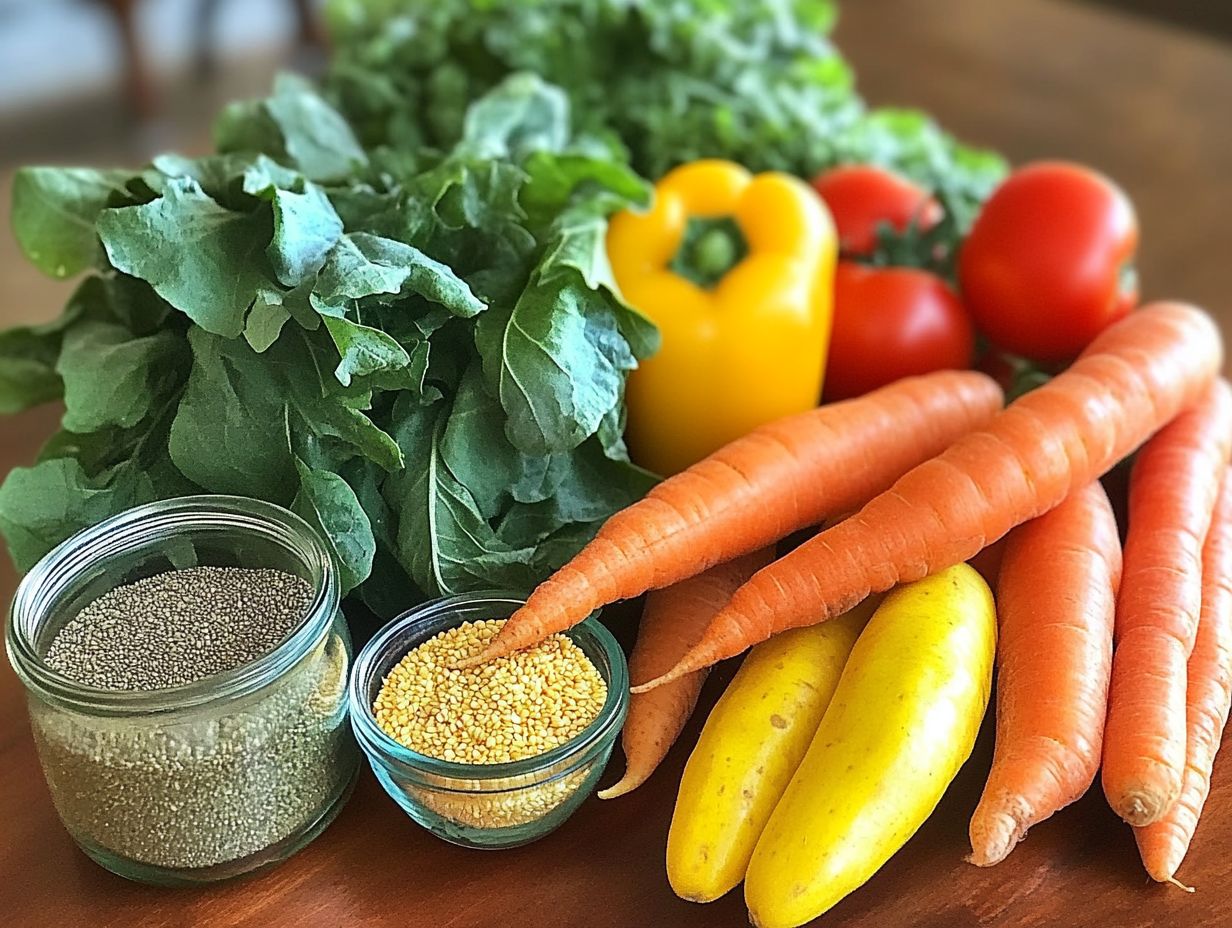
The vegan elimination diet offers numerous health benefits; however, it also carries risks, including potential nutrient deficiencies, the possibility of developing disordered eating patterns, and social isolation that can arise from strictly adhering to dietary restrictions.
1. Nutrient Deficiencies
Nutrient deficiencies are a significant concern associated with vegan elimination diets, particularly deficiencies in essential vitamins and minerals that arise from the removal of certain food groups.
One common issue for individuals following this diet is the development of deficiencies in vitamin B12, iron, calcium, omega-3 fatty acids, and vitamin D. These nutrients are predominantly found in animal products, making it crucial for those who have adopted a vegan lifestyle to seek alternative sources.
- Fortified plant-based milks and nutritional yeast serve as good sources of vitamin B12.
- Legumes, seeds, and green leafy vegetables provide iron.
- Flaxseeds, chia seeds, and certain grains are excellent sources of omega-3 fatty acids, which are often deficient in plant-based diets.
Given the complexity of nutrition, the heightened risk of nutritional deficiencies, and the need to manage food intolerances and sensitivities, consulting with a registered dietitian or medical professional is advisable. They can offer tailored recommendations and help ensure that dietary restrictions do not compromise overall health and wellness.
2. Disordered Eating Patterns
Vegan elimination diets can lead to disordered eating patterns in individuals who become overly restrictive or obsessive about their food choices, negatively impacting their mental health and well-being. This is particularly concerning for those with existing health conditions such as IBS or ADHD, where dietary adjustments are crucial.
This eating style may foster feelings of guilt or anxiety around food, as it often involves eliminating entire food groups, such as dairy or gluten, and placing excessive focus on what is being consumed. As a result, a problematic relationship with food may develop, causing eating to become a source of stress rather than a source of joy.
To counteract these patterns, it is important to emphasize moderation and flexibility in one’s diet. This can include strategies such as:
- Incorporating a variety of plant-based foods, including legumes, nuts, seeds, and whole grains
- Practicing mindful eating
- Allowing for occasional treats, even those containing nightshade vegetables or dairy substitutes
Collaborating with a registered dietitian can provide a personalized framework to help individuals cultivate a healthier mindset regarding food and nutrition, addressing any food allergies, intolerances, or sensitivities that may exist.
3. Social Isolation
Social isolation is a potential risk associated with a vegan elimination diet, as individuals with specific food intolerances or sensitivities may struggle to navigate social situations involving food, which can lead to feelings of exclusion or anxiety. This is especially true during gatherings, parties, or restaurant outings, where food plays a central role in social interaction.
Those with specific dietary restrictions may worry about limited options or feel uncomfortable asking for modifications. However, it is possible to maintain social connections while following a non-traditional diet by employing a few strategies.
- Planning ahead by selecting restaurants with a diverse menu can alleviate stress.
- Suggesting potluck-style events when invited to gatherings allows individuals to share their favorite vegan dishes, ensuring that there is something for everyone, including those with food sensitivities or allergies, and providing reassurance to the host.
How to Reintroduce Foods After the Elimination Phase?
The reintroduction phase of a vegan elimination diet involves gradually reintroducing potential trigger foods one at a time. This process helps determine their effects on an individual’s health and identify any negative responses.
What Foods Should Be Reintroduced First?
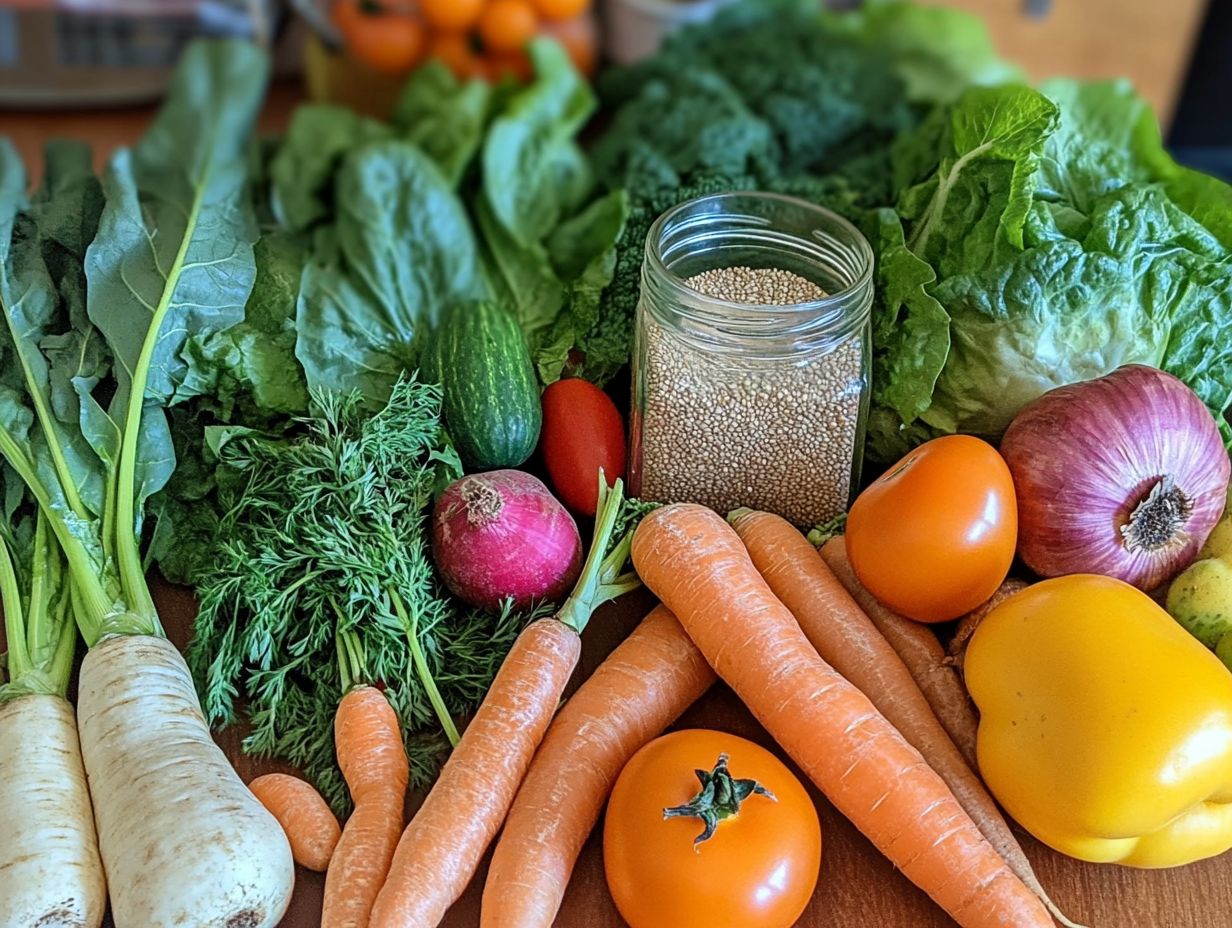
During the reintroduction phase of a vegan elimination diet, it is advisable to first reintroduce foods that are less likely to trigger reactions, such as certain fruits and vegetables. This approach allows individuals to gradually assess their tolerance levels while minimizing the risk of discomfort, such as bloating or chronic migraines, or adverse symptoms.
It is ideal to start with foods like cooked carrots or steamed zucchini, which are typically well-tolerated. Individuals should reintroduce only one food group at a time, allowing several days between each addition to closely monitor any reactions.
This method helps identify specific sensitivities without overwhelming the system and facilitates the gradual transition to a well-balanced diet.
What is the Recommended Reintroduction Schedule?
The recommended reintroduction timetable for a vegan elimination diet typically includes a pause of 3 to 5 days between the reintroduction of each food, allowing individuals to observe any reactions that may occur after eating, such as gastrointestinal discomfort or migraines.
This method facilitates the identification of individual dietary triggers and ensures that each food is thoroughly evaluated for compatibility with the body. During this period, it is essential to note any symptoms experienced, regardless of how minor they may seem.
Documenting these reactions can provide clearer insights into which foods may be causing discomfort or adverse effects. A specific schedule not only enhances the systematic nature of the process but also promotes a sense of control, making it an important aspect of any effort to return to a comprehensive and health-conscious diet.
What to Do After the Vegan Elimination Diet?
After conducting a vegan elimination diet, individuals should discuss their findings and develop a long-term dietary plan that accommodates any food intolerances, food allergies, or sensitivities identified during the elimination process.
This diet should also promote long-term health and nutritional balance for the individual.
How to Maintain a Healthy Vegan Diet?
A healthy vegan diet can be achieved by making dietary modifications that meet all nutritional requirements while reducing any identified food sensitivities or intolerances.
This involves including a wide variety of nutrient-dense foods such as legumes, nuts, seeds, whole grains, and plenty of fruits and vegetables in the diet, while also considering dairy substitutes if necessary.
Careful meal planning can be beneficial; by planning meals and snacks for the week in advance, individuals can avoid the boredom of uninspired eating, which can lead to nutrient deficiencies. Consuming a broader range of foods will also expose vegans to a wider array of vitamins and minerals.
Additionally, seeking advice from a registered dietitian can enhance dietary choices by ensuring balanced nutrition and addressing specific health concerns.
When to Repeat the Elimination Phase?
Individuals who still experience symptoms or wish to further investigate food intolerances that were not fully assessed in the initial phase may need to repeat the elimination phase. This step is particularly relevant if certain reactions lack a clear explanation or if individuals observe the development of new symptoms over time.
The process can help identify whether specific foods are linked to ongoing discomfort, even if those foods were previously deemed acceptable. Continued and consistent tracking of symptoms is essential, as careful monitoring may reveal patterns and triggers that had not been noticed before.
Making dietary adjustments to the dietary plan is important during this phase, as it can help in managing any newly identified food intolerances or sensitivities, including those related to eosinophilic esophagitis or other health conditions.




